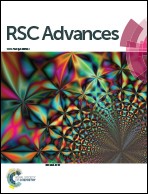Synthesis of CuxNi1−x alloy nanoparticles from double complex salts and investigation of their magnetoimpedance effects
Abstract
In this work, magnetic CuxNi1−x alloy nanoparticles were obtained from DCSs by a chemical reduction method. In this method magnetic CuxNi1−x alloy nanoparticles were prepared from [Cu(NH3)4][Ni(C2O4)2], [Cu(en)2][Ni(C2O4)2] and [Cu(py)4][Ni(C2O4)2] coordination complexes. Reduction of these complexes occurred in an ethanolic aqueous solution using hydrazine monohydrate. In order to characterization the synthesized compounds, we have used IR spectroscopy, EDX, SEM and XRD. The magnetic properties of the nanoalloys were measured using a Vibrating Sample Magnetometer (VSM). Magnetoimpedance (MI) measurements were performed using a Lock-in Amplifier (7265 Perkin Elmer) at a frequency of 250 kHz. These alloys demonstrate ferromagnetic behaviour which is due to the presence of nickel in the alloys. This property makes them excellent candidates for technological applications such as magnetic devices or sensors based on the MI effect. The powder X-ray diffraction patterns were analyzed using a Rietveld method. The analyses were carried out with the GSAS software package. The results of the Rietveld refinements show a good agreement between the observed pattern and the calculated values.


 Please wait while we load your content...
Please wait while we load your content...